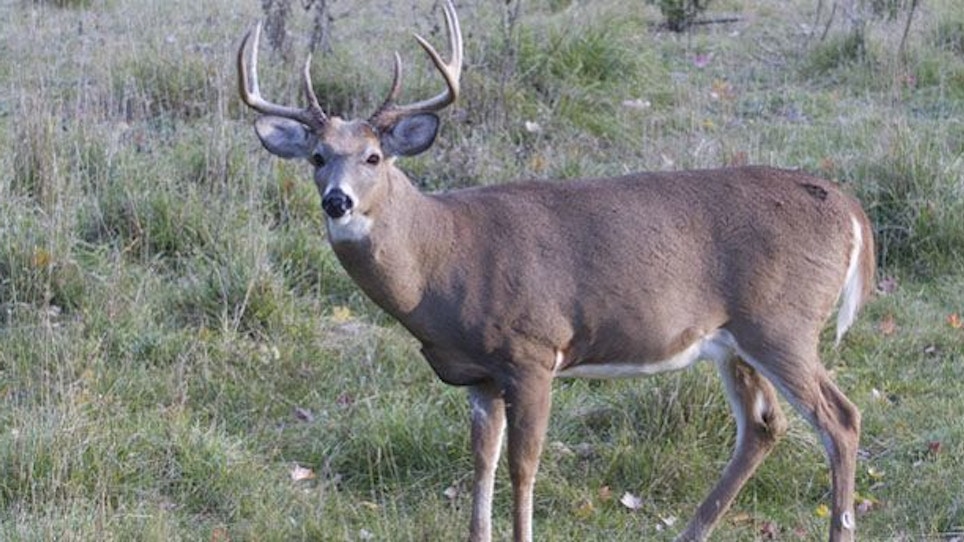Larry Mandell has been a professional meat cutter for 24 years. He has also butchered thousands of whitetails for area hunters and for local venison donation programs. He knows why his own venison always tastes good—real good, in fact—while the venison from other hunters can sometimes taste a bit gamey.
Cool the Meat ASAP
Gone are the days of strapping a buck to the hood of the truck and parading around town to show everyone, get a photo in the newspaper and then head home to begin the work.
Now, if you're not getting your doe or buck gutted and on ice or cooled down as soon as you can you're behind the curve. Whether you have a trusted processor or you're a DIY guy, time is critical.
“The secret to good-tasting venison,” Mandell said, “is to first cool it down as fast as possible. A deer starts to cook from the inside out as soon as it dies, turning the meat green and giving it a skunk-like smell in short order.”
Clean the Animal Well
That guy in camp who is a whiz with a knife? He didn't just pick up a blade and know how to gut a deer, get it clean inside and easily skin it. Those things take time and practice.
You will learn to do it. You will make mistakes, like puncturing the stomach (it's a life lesson) or possibly rupturing the bladder. If it happens, all is not lost. Just keep going, wash out the internal cavity well and remember to do better next time.
However, being sloppy with your cleaning results in more work for the processor or bad meat if you DIY at home.
“Keep in mind that the better you clean the animal, the better the quality of meat you will have,” Mandell said. “The biggest problem hunters make in this regard is that they don’t always complete the field dressing chores. It's not uncommon for us to find the esophagus, heart or lungs still in the chest cavity. On occasion we might even find the hunter failed to remove the rectum, leaving us with that and a full bladder to contend with. If the deer was shot in the intestines or the liver, there might also be food particles, blood, hair, bone fragments, or other body parts in the body cavity, all of which can eventually transmit a bad or gamey taste to the meat.”
“Gut the animal as soon as possible, and after removing the entrails roll the carcass over so you can drain as much blood from the body as you can. Then take a rag and clean out the body cavity of excess blood, body fluids, partially digested food particles, urine, feces, broken bones, dirt, etc."
Mandell suggests to not use creek water or pond water to clean out the inside, due to possibility of bacteria in the water. If you shoot a deer or other animal in the gut early in the season and don't recover it until the next day, that also can be a problem.
"You might also want to saw or chop through the pelvis to help cool the rear quarters," he said "If you have no cutting tools, stand on the deer’s rear legs, grab the tail, and yank up forcefully. In most cases this should crack the pelvis.”
Open the Cavity, Vent the Heat
Stay cool, baby! Once you've gutted the deer, get it cooled down as quickly as possible.
“Now you can prop open the body cavity with a stick,” Mandell said, “and hang the deer up to get it off the ground. If it is not a trophy buck, split the breast bone to the base of the neck to help get the heat out. Keep in mind that the neck holds lots of heat and is home to several strains of bacteria used for digestion.
“Then hang it in the shade. It makes little difference if you hang it by the neck or back legs, although most hunters seem to prefer to hang their bucks by the hind legs because it is easier for them to skin it from this position. Do not, however, skin your buck until you are actually ready to cut it up; otherwise the meat will dry out, get tough and blacken. Once the carcass has cooled, the hide will actually help keep it cool, especially after a heavy frost. It will also continue to protect the meat from dirt, debris, and insects.”
DIY Butchers: Trim the Fat
“If you can’t get the carcass to a processor in a day or two,” advises Mandell, “trim as much fat from the carcass a possible. Then bone out the larger portions such as the front shoulders, back straps, and rear quarters. I prefer a sharp knife with a narrow 6-inch curved blade for boning, and an 8-inch curved blade for cutting steaks and slicing stew meat.
"Wrap the meat and place it in a cooler on ice to chill it down as fast as possible. Do not wrap the meat in plastic as it holds in heat and moisture. Freezer paper or aluminum foil is a good choice. If there is no ice or cooler available and you are still in the field, wait until the carcass cools before you wrap it in cheese cloth, and then bring in to a butcher ASAP."
Add Beef Fat, Remove All Bones
“Finally,” Mandell offers, “do-it-yourself butchers should remove as much fat from the carcass as possible to eliminate any gamey taste. Add beef suet to your ground venison, and you will have more taste. Bones can also give your venison a bad taste.
"I opt to bone out all meat, including the back straps. Sometimes bacteria forms on the inside of the body cavity, giving it a slimy appearance, especially if the animal was gut shot. The presence of bone in the meat can thus give your chops a gamey taste.”






